In the fascinating world of gardening, plants are not just aesthetic elements that beautify our spaces; they are also living beings that require care and attention to thrive.
One of the most important considerations when growing plants in pots is proper water drainage. However, what happens when we encounter the limitation of pots without drainage holes?
Although the lack of drainage holes may seem like a death sentence for many plants, there are some varieties that surprisingly can thrive in these challenging conditions.
In this article, we will explore a selection of plants that can survive and even flourish in pots without drainage holes.
It is important to note that most plants need good drainage to avoid root rot problems.
However, there are some plants that can survive in pots without drainage holes, but they require additional care to prevent root rot from excess stagnant water.
1. Zamioculcas (Zamioculcas zamiifolia)
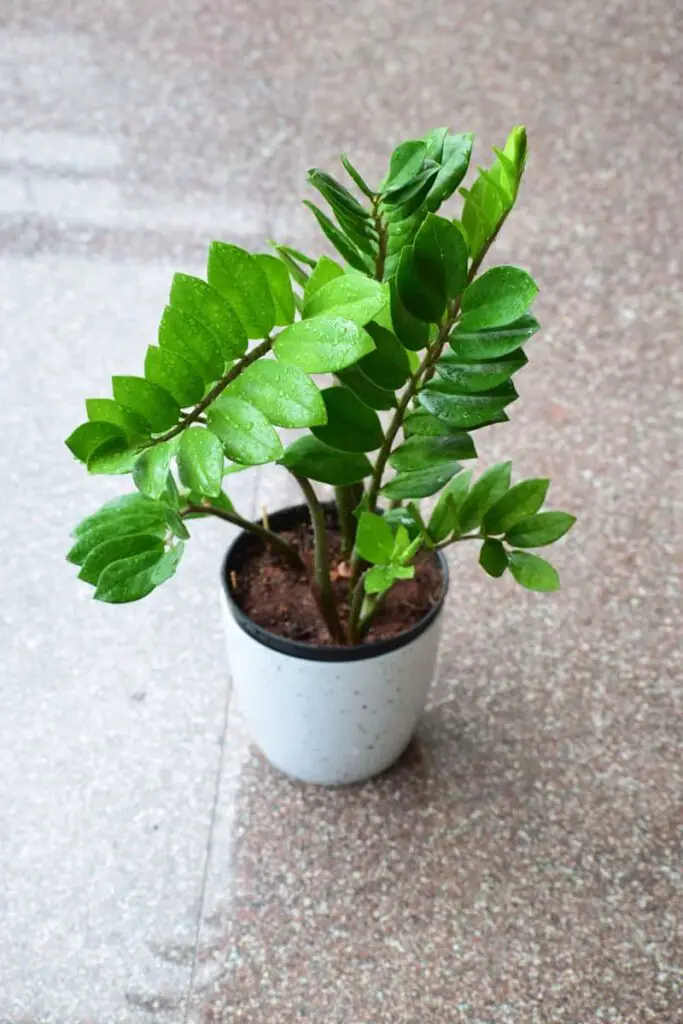
The Zamioculcas zamiifolia, also known as the ZZ plant, is an indoor plant appreciated for its strength and easy care. It is distinguished by its lush, glossy, dark green leaves that grow in vertical stems from its base.
This plant is known for its adaptability to variable light conditions, from bright light to partial shade, making it ideal for indoor environments.
The Zamioculcas zamiifolia is drought-resistant and can tolerate periods of neglect in watering, making it a popular choice for those seeking a low-maintenance plant.
Additionally, it is an air-purifying plant, helping to improve indoor air quality. Its resilience and beauty make it a versatile and attractive option for decorating any indoor space.
The Zamioculcas zamiifolia, or ZZ plant, can survive in pots without drainage holes due to its ability to store water in its rhizome, its drought tolerance, low water requirements, and its ability to grow in compact soils.
2. Pothos (Epipremnum aureum)
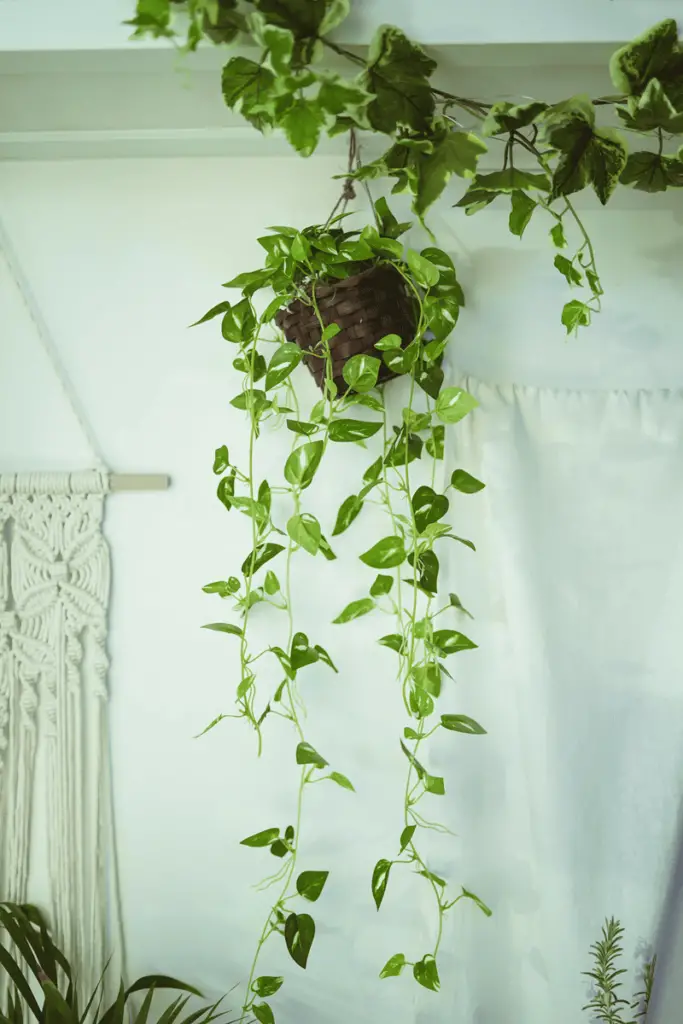
The Epipremnum aureum, commonly known as pothos or devil’s ivy, is a climbing plant native to the tropical regions of Southeast Asia.
It is distinguished by its glossy, heart-shaped leaves that can vary in color from dark green to golden yellow, depending on the variety and growing conditions.
This plant is ideal for anyone due to its ease of care and its ability to adapt to a variety of environmental conditions, making it a popular choice for indoor settings.
Pothos is resilient and tolerant of neglect, meaning it can thrive with minimal maintenance. Additionally, it is an air-purifying plant, making it an ideal choice for improving indoor air quality.
Its ability to grow in both pots and hanging baskets makes it versatile and decorative.
Epipremnum aureum, known as pothos, can survive in pots without drainage holes thanks to its ability to tolerate excess water, develop aerial roots to absorb moisture, and adapt to challenging conditions.
Its resilience and adaptability allow it to thrive with proper care, although it’s important to control the amount of water to avoid overwatering issues. Choosing an appropriately sized pot and controlling watering are key to maintaining the plant’s health in these challenging conditions.
3. Chlorophytum comosum

The Chlorophytum comosum, commonly known as the “spider plant,” is a popular indoor plant valued for its ornamental appearance and easy care.
It is distinguished by its long, arching leaves that grow in rosette form from the center of the plant and are marked with white or cream stripes along the edges.
This plant produces small white flowers on slender stems that protrude above the leaves, adding a touch of delicacy to its overall appearance.
The spider plant is known for its ability to purify the air, removing common toxins from the home. Additionally, it is resilient and adaptable to a variety of light and watering conditions.
Chlorophytum comosum survives in pots without drainage holes thanks to its robust root system that tolerates excess moisture. Its ability to adapt to various conditions and its overall resilience allow it to thrive with moderate care.
However, caution should be taken to avoid overwatering the substrate and ensure the plant’s continued health.
4. Schlumbergera
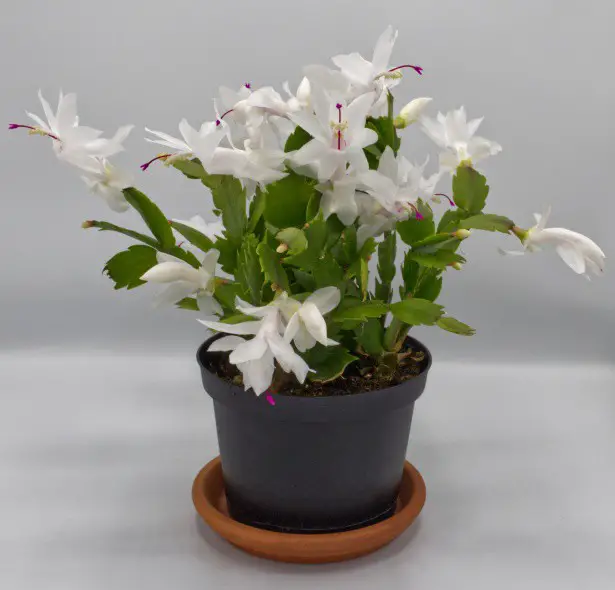
Schlumbergera, commonly known as Christmas cactus, is a succulent plant native to the tropical forests of Brazil.
It is characterized by its segmented, flat stems that grow either hanging or upright, with serrated and rounded edges. One of its most distinctive features is its trumpet-shaped flowers, which can vary in color from white to deep red, with intermediate shades such as pink and orange.
It typically blooms in fall and winter, adding a splash of color and cheer during the Christmas festivities.
It is an easy-care plant that thrives in bright, indirect light conditions and requires moderate watering during the active growing season.
Schlumbergera can survive in a pot without a drainage hole due to its ability to store water in its succulent stems and roots. Additionally, they have a relatively high tolerance for excess moisture, allowing them to stay healthy even when water does not drain properly.
However, it is important to control watering to avoid waterlogging, as prolonged excess moisture can cause root rot and other health problems for the plant.
You may like: 10 Plants That Don’t Need Sunlight
5. Aloe vera
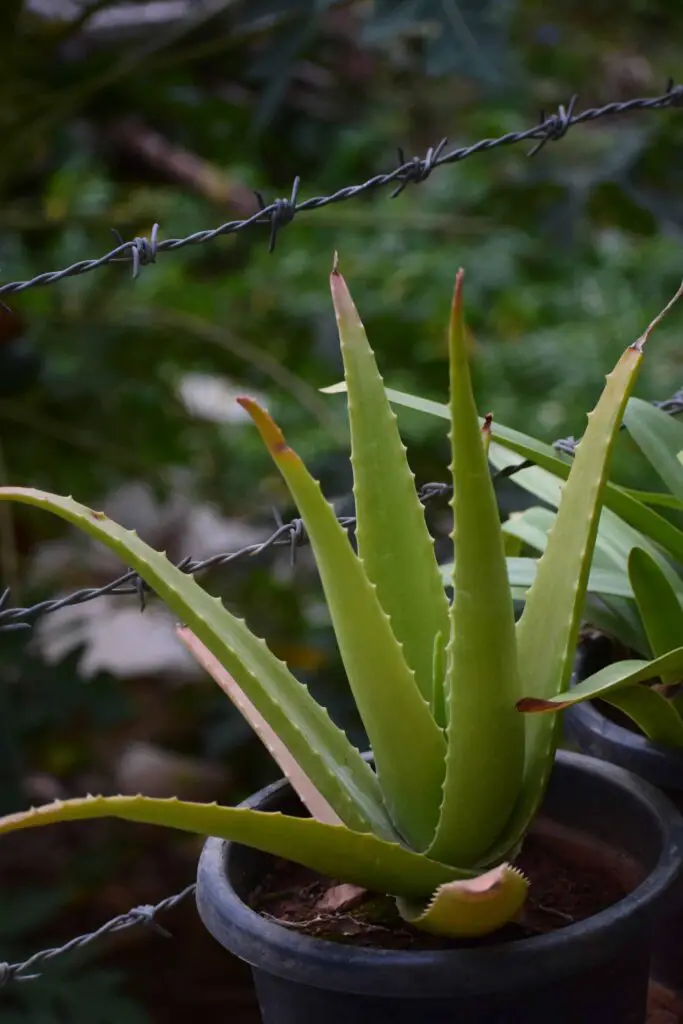
Aloe vera is a succulent plant that is characterized by its fleshy, toothed leaves that grow in a rosette shape from the base.
Native to arid and tropical regions, this plant has been widely cultivated for its medicinal and cosmetic properties.
The leaves contain a clear gel with healing properties known for its ability to relieve burns, skin irritations, and other skin conditions.
Aloe vera is hardy and easy to care for, requiring direct or bright sunlight and well-drained soil to thrive. In addition to its health benefits, its tubular yellow flowers that emerge on long stems can add a decorative touch to your surroundings.
Aloe vera can survive in a pot without a drainage hole due to its ability to store water in its fleshy leaves and succulent root system.
Adapted to arid environments, this plant can tolerate prolonged periods of drought and is capable of absorbing and retaining large amounts of water when it is available.
Additionally, its roots are tough and can withstand less than ideal soil conditions, allowing it to adapt to undrained pots where excess water can accumulate. However, it is crucial to control watering to avoid waterlogging, which can cause root rot and affect plant health.
6. Plectranthus australis
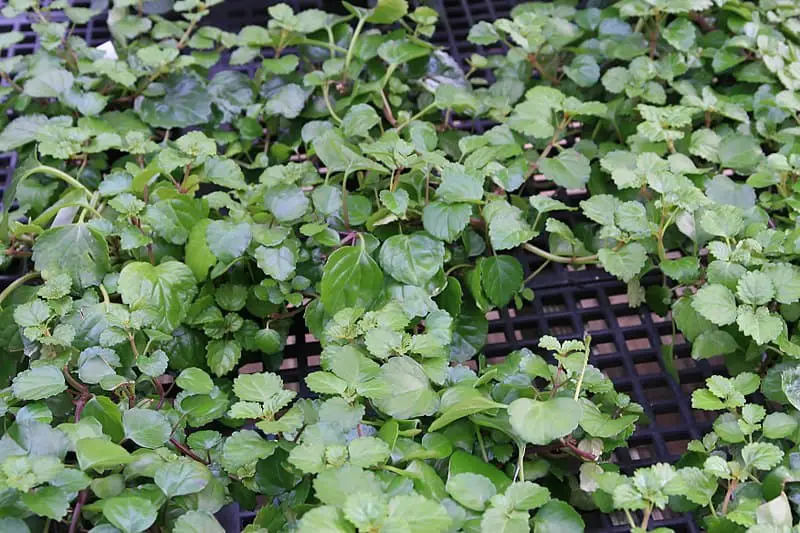
Plectranthus australis, also known as the money plant, is a perennial plant native to South Africa appreciated for its fleshy, rounded, bright green foliage.
This low-maintenance house plant produces small lavender or lilac flowers during the summer and is adaptable to a variety of light conditions. It is easy to care for and propagates easily through stem cuttings.
Plectranthus australis can survive in a pot without a drainage hole due to its ability to tolerate less than ideal soil conditions and its ability to store water in its fleshy leaves. It adapts to variable environments, so it can handle short periods of wet soil without risk of root rot.
However, it is important to control watering to avoid waterlogging and maintain optimal plant health.
7. Filodendro (Philodendron)

Philodendron is a genus of indoor and outdoor plants that includes a wide variety of species known for their large foliage and easy care.
Characterized by large, shiny leaves with varied shapes, which can be lobed, heart-shaped, these plants offer a tropical aesthetic to any space.
They are often grown as houseplants due to their ability to thrive in moderate light conditions and their resistance to drought. Additionally, some Philodendron species are climbers, allowing them to grow vertically.
They are versatile plants that can adapt to a variety of settings and decorating styles, making them a popular choice for houseplant lovers.
Philodendron can survive in a pot without a drainage hole due to its ability to adapt to less than ideal soil conditions and its tolerance to excess moisture. Its roots are able to withstand short periods of wet soil without rotting.
However, it is important to control watering to avoid waterlogging and maintain long-term plant health.
8. Ficus elastica

Ficus elastica, also known as rubber tree, is a houseplant prized for its attractive foliage and easy care. It is characterized by its large, thick and shiny leaves that have an intense green color.
These leaves can be oval and have a characteristic shine that adds a touch of elegance to any space. Ficus elastica is a robust and hardy plant that can grow to impressive heights if given enough space.
Additionally, it is known for its ability to purify the air, making it a popular choice for indoors. It is important to provide it with bright indirect light and a well-drained substrate so it can thrive.
An important fact, Ficus elastica is a poisonous plant for pets and humans if ingested, so caution should be taken when placing it in accessible areas.
Ficus elastica can survive in a pot without a drainage hole due to its ability to tolerate less than ideal soil conditions and its resistance to excess moisture. The roots of this plant can adapt to short periods of wet soil without rotting. However, it is important to control watering to avoid waterlogging and maintain long-term plant health.
9. Dracaena sanderiana
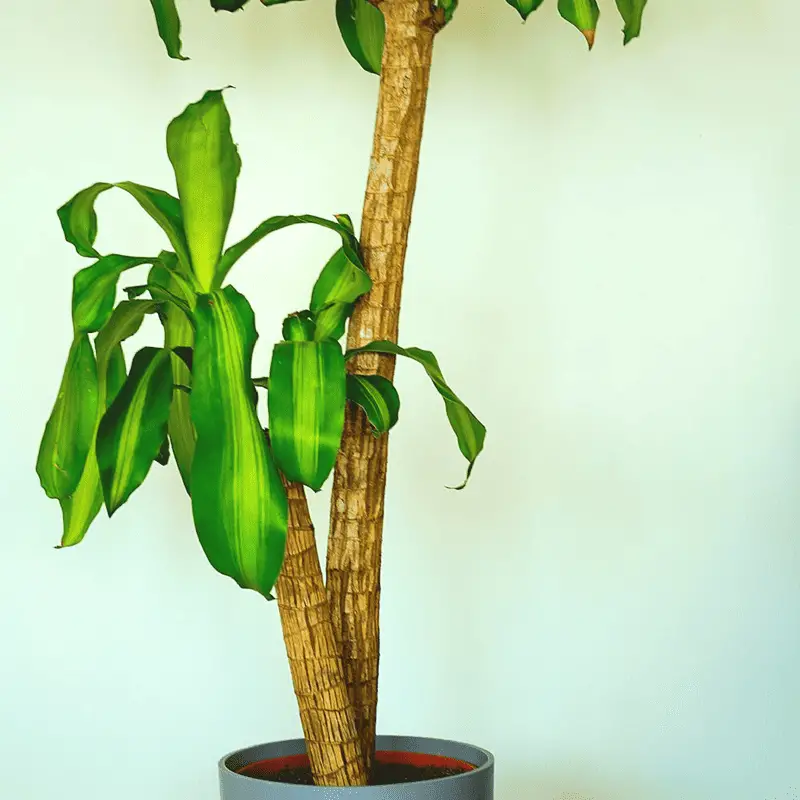
Dracaena sanderiana, commonly known as lucky bamboo, is a popular houseplant prized for its attractive appearance and easy care.
Although it is not a true bamboo, it has thin, flexible stems that grow vertically, often in a spiral. Its leaves are lanceolate and can be bright green or have white or yellow stripes.
Dracaena sanderiana is valued for its symbolism of good luck and prosperity in Eastern culture. It is commonly grown in containers of water and stones, giving it an elegant and minimalist look.
It is a hardy plant that tolerates variable light conditions, but prefers bright indirect light. Its maintenance is simple, requiring only regular water changes and occasional pruning to maintain its shape.
Dracaena sanderiana is a great choice for those who want to add a touch of green and positivity to their home or office with little care effort.
10. Sansevieria
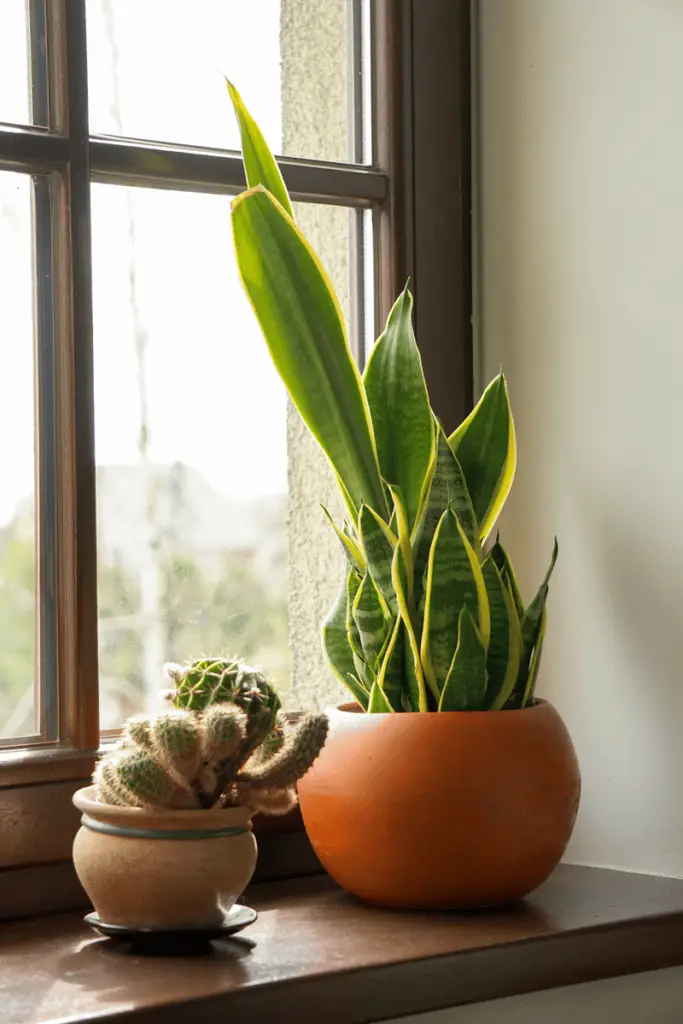
Sansevieria, also known as mother-in-law’s tongue, is a succulent plant characterized by its long, erect leaves that grow in a rosette shape, with a fleshy texture and a variety of patterns and colors, ranging from dark green to yellow. pale yellow.
Sansevieria is known for its ability to purify the air by absorbing toxins and producing oxygen at night, making it ideal for indoors. It is drought resistant and can tolerate variable light conditions, from bright light to partial shade.
Additionally, it is an adaptable plant that can thrive in a wide range of soils and environments.
Sansevieria can survive in a pot without a drainage hole, as it is resistant to excess moisture. Its roots are able to withstand short periods of wet soil without rotting.
It is important to control watering to avoid waterlogging and maintain long-term plant health.
11. Hatiora
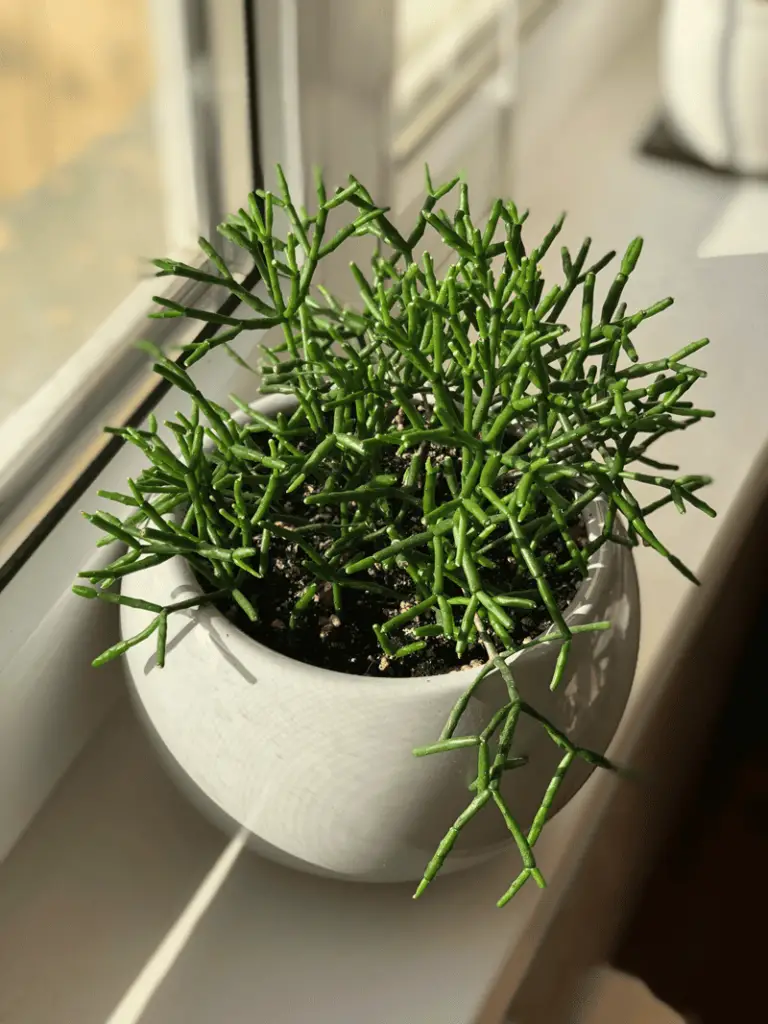
Hatiora, also known as Easter cactus, is a succulent plant that stands out for its beauty and its ability to bloom during spring. Native to Brazil, this plant has cylindrical or flattened stems that grow in the form of stacked segments.
During spring, it produces stunning bell-shaped flowers that can be brightly colored such as orange, yellow or red, adding a splash of vibrant color to any setting.
Hatiora has the characteristic that it is easy to care for and its adaptability to a variety of light and temperature conditions. It is a popular houseplant that can be placed in hanging pots or pots on flat surfaces, adding a touch of exoticism and beauty to any space.
Hatiora can survive in a pot without a drainage hole thanks to its ability to store water in its tissues and its resistance to excess humidity.
In conclusion, plants that do not require drainage holes can survive in less than ideal conditions thanks to their ability to adapt to waterlogging and tolerance to excess moisture. However, it is essential to monitor watering and provide proper care to avoid waterlogging problems and ensure the long-term health of these plants in undrained container environments.